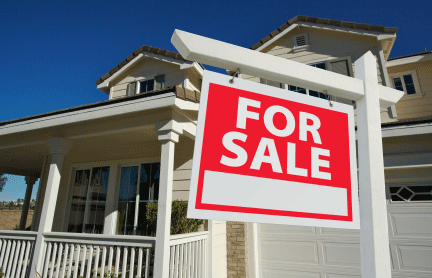 |
 Rock
gardens, rose gardens, herb gardens, vegetable gardens... all are
beautiful and appealing in their own right, but how do you know which
type of garden is right for you and your home? The right combination of
beauty, care, and functionality is what you want to look at when
planning a garden. Rock
gardens, rose gardens, herb gardens, vegetable gardens... all are
beautiful and appealing in their own right, but how do you know which
type of garden is right for you and your home? The right combination of
beauty, care, and functionality is what you want to look at when
planning a garden.
Perennial Gardens are made
of plants that live longer than two years. Perennials bloom in spring
and summer and die again in fall and winter. Perennials are easy to
grow and a great investment since they come back year after year. Lower
maintenance perennials like day lilies, coneflowers, and hostas are
great plants for beginning perennial gardeners. Over time you can move
to higher maintenance (but longer lasting) perennials, like peonies and
roses.
Annual Gardens. They offer bold color
for your garden for long periods of time since they bloom year round.
Many annuals reach heights of up to two feet. Annuals are usually mixed
within other types of gardens inside complex landscape plans. Clumps of
annuals look better than rows or lines. When planting, try and keep the
taller plants to the back and the shorter ones in front. Try planting a
clump of one color of annuals beside a clump of annuals in another
color, for a nice contrast. Be sure to learn about how to keep your
annual garden healthy and safe from animals, pests, and diseases.
Bulb Gardens. These do
require some regular maintenance, but come spring they'll reward your
hard work with beautiful bursts of colorful flowers. If you're new to
bulb gardening, try the hyacinth, a hardy flower that is easy to grow
and will perfume your garden with just a few bulbs. Tulips, perhaps the
most popular variety of bulb flowers, bear their cup-shaped flowers in
nearly every color of the rainbow, except true blue.
Herb and Vegetable Gardens.
What could be better than having fresh herbs and vegetables from your
very own garden? Plant this type of garden in a well-lit area, as most
herbs and vegetables need plenty of sunlight for the maximum amount of
flavor. If you can, use a square-bed system with a neat network of
paths between plantings. This will keep you from compacting the soil or
trampling a fragile herb plant on your way to gather some sprigs of
parsley before dinner.
|
|
 |
| Tips for Selling in a Tough Economy |
If
you're looking to sell your house during these tough economic times,
take heart. Although you can't change the economic crisis our nation is
currently in, you can be proactive and informed about what to expect,
so your house can stand out from the others on the market. When
attempting to sell your house, here are the most common obstacles
you'll face: dropping home values, a record number of foreclosures, and
a shortage of buyers due to the current credit crunch. At a time when
you need every edge you can get, every little bit of extra effort helps.

Proper pricing
is critical to selling your house in the kind of market we're in. And
though it might be difficult, this means pricing your home for what
it's worth - and that isn't necessarily the same price as what you paid
for it or what you think it is worth. You'll also want to check with
your mortgage lender to determine your mortgage balance (if there is
one). Then you can just subtract your asking price from your mortgage
balance to determine how much money you stand to make on the sale of
your home. If you're hiring a real estate agent, they'll be able to
help you come up with an appropriate price for your house. If you're
not, check out the price listings for other comparable homes in your
area, and consid your home's appraised value.
Stage your home
effectively. Sometimes the difference between getting an offer and not
getting an offer depends upon staging your home effectively. The basics
of home staging are depersonalizing and de-cluttering: packing up
personal photographs, family heirlooms, and everything else that will
pre
vent the visitors
touring your home from imagining it could be theirs. Focus on
transforming your home back into a house; a product optimized for sale.
For more help, hire a home staging expert.
Market
your house as widely as possible: word of mouth, newspaper and local
magazine ads, open house, flyers, etc. Remember that the more leads you
get out of advertising, the more likely you'll get the response you've
been looking for.
|
|
|
|
 |
 Before
you purchase a new home, you'll want to keep a few things in mind. For
example, are you just out of college and looking for a starter house
before you move on to a new city or a larger home, or are you a married
couple with children looking for a home where you can set down
permanent roots? Buying a house is a big decision, and your future
plans are definitely factors you'll want to consider before buying a
new home, as well as pricing and other financial considerations.
Especially with the current economical landscape, you should be aware
of what to expect before, during, and after the home purchasing process. Before
you purchase a new home, you'll want to keep a few things in mind. For
example, are you just out of college and looking for a starter house
before you move on to a new city or a larger home, or are you a married
couple with children looking for a home where you can set down
permanent roots? Buying a house is a big decision, and your future
plans are definitely factors you'll want to consider before buying a
new home, as well as pricing and other financial considerations.
Especially with the current economical landscape, you should be aware
of what to expect before, during, and after the home purchasing process.
Do
your research. From finding the right real estate agent and loan
representative, to choosing the right neighborhood and home inspector,
researching every step in your journey to home ownership will come in
handy. Doing your research will help you to make more informed
decisions, and breaking the steps up into parts will prevent you from
becoming too overwhelmed by the process. Being educated and
knowledgeable about the process will help you have the most bargaining
power possible – saving you money (and headaches) during a time that
should be exciting and new.
Be modest about price range. Don't
fall prey to purchasing a house you can't afford. Are the mortgage
payments a bit of a stretch or will you be able to make them and still
maintain your current lifestyle? Don't allow anyone to talk you into
buying a house you can't really afford, no matter how perfect the
neighborhood, or how much you've always wanted a two story Cape Cod
with a picket fence and pool. Buying a house that's within your price
range will allow you to be able to fully enjoy it without having to
worry about how you'll be able to come up with your mortgage payment. A
good rule of thumb: your housing payment shouldn't exceed more than 35
percent of your gross income. And don't forget to factor in the
additional cost of homeowner's insurance, property taxes, home
maintenance, and homeowner's association dues, if applicable.
Bargain
and compromise. Especially with the real estate market in the shape it
is, don't be afraid to do a little bargaining with the homeowner. It
never hurts to ask, and you just may find yourself saving thousands, or
walking away with a few extra perks. Remember too that little details
like ugly carpet in bedrooms aren’t worth turning down an otherwise
great house. Too many home shoppers get caught up with little aesthetic
details that are actually quite simple to replace or alter. You may
even be able to save quite a bit of money by living with some outdated
wall colors, light fixtures, and other furnishings – until you can
afford a remodel.
|
|
 |
|
|
|
 |
|
In This Issue:
|
|
 |
|
Contact me:
|
Name

Phone
My Website
|

|
|
Largest Private Home in America: The Biltmore Estate
|
|
America's
largest private home, the Biltmore Estate boasts 250 rooms and 175,000
square feet. Nestled among the Blue Ridge Mountains near Asheville,
North Carolina, the home was also ranked eighth on the American
Institute of Architects’ 2007 list of the top 150 favorite American
structures. Join the more than 1 million visitors who visit the
Biltmore Estate each year to enjoy the home's Gilded Age grandeur, 75
acres of formal gardens, and winery. Guests walking through the home
marvel at unique features like the 70,000 gallon indoor swimming pool,
the bowling alley, the two-story library, one-of-a-kind art and
furniture, and 19th century rarities like elevators, indoor plumbing,
fire alarm, and intercom systems. Out of town guests may enjoy a stay
at the 123-room Inn on Biltmore Estate, an American Automobile
Association (AAA) four-diamond hotel.
|

|
|
Greening Your Home
|
|
The
more alterations you can do to your new home to make it greener, the
better your home will be for your family and the planet. Every little
bit helps, so get started today with these tips:
Green your appliances.
According to the Environmental Protection Agency, replacing that old
refrigerator you've kept in your garage for the last 15 years could
save you up to $150 per year. If any of your appliances are more than
ten years old, consider replacing them with "Energy Star" appliances
that can save 10-50 percent more energy than standard or older
appliances. And here's a fact to help you see how small changes in your
home can make a difference: According to the EPA, just one out of every
ten homes using more energy efficient appliances is the equivalent of
planting 1.7 million acres of trees!
Save water. Installing
an aerator on all household faucets will cut your household's water
consumption by half, and installing a low flow toilet during a bathroom
renovation, instead of a standard one, will save nearly two gallons of
water every time you flush. And don't discount the value of behavioral
changes – turning the water off while you brush your teeth will save
4.5 gallons of water every time you brush, while using a broom to clean
your driveway, instead of a water hose, will save 80 gallons.
Let there be (energy efficient) light.
Compact Fluorescent Bulbs (CFLs) use 66 percent less energy than a
standard incandescent bulb and last up to 10 times longer. Replacing
just one standard bulb with a CFL can save up to $30 in energy costs
over the life of the bulb.
|
|
 |
